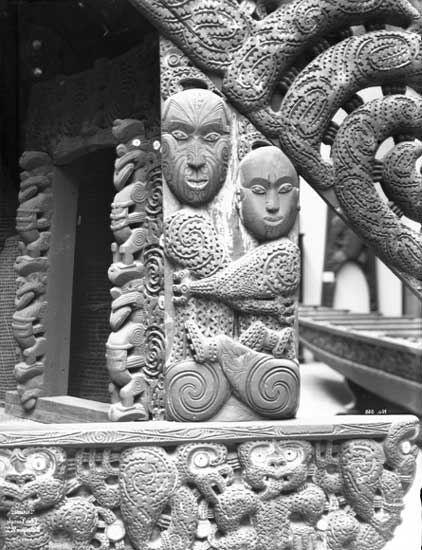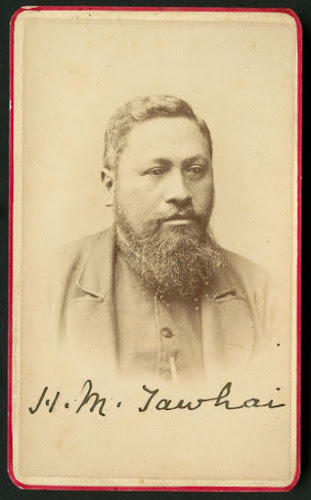Book Review: Arthur J. Ray, 'Aboriginal Rights Claims and the Making and Remaking of History'
Reviewer: Vincent O'Malley
Arthur J. Ray. Aboriginal Rights Claims and the Making and Remaking of History. Montreal: McGill-Queen's University Press, 2016. 360 pp. $29.95 (paper), ISBN 978-0-7735-4743-8.
Reviewed by Vincent O'Malley (HistoryWorks)
Published on H-Empire (March, 2017)
Commissioned by Charles V. Reed
At the Interface of Law and History
Arthur Ray’s new book aims to provide “a single-volume introduction to the use of historical evidence in the varied aboriginal rights and treaty claims settings of Australia, Canada, New Zealand, South Africa, and the United States” (p. xxvi). Besides introductory and concluding sections, the work consists of a chapter on each of these countries, besides Canada, where the unique claims of the Métis people merit a separate chapter of their own. Given the scale of the issues involved, Ray emphasises that it has not been possible to provide comprehensive coverage. Consequently, in most cases the focus is on selected aspects of the claims history only.
The chapter on the United States concerns the history of the Indian Claims Commission established by Congress in 1946 on a five-year mandate that was renewed multiple times until 1978. But here Ray’s narrative is mainly concerned with the commission’s early years through the 1950s. And in this instance it is anthropologists rather than historians at the fore of the story. What emerges is just how slipshod the whole process was in its initial phase. In some cases expert witnesses for the federal government presented evidence on reports they had no hand in preparing. After being forced to concede as much under cross-examination, one witness described the lawyers involved as “real sons of bitches and undiluted bastards” (p. 39). Meanwhile, lacking the resources available to the federal government, in some instances the Indian tribes were forced to find creative ways of hiring their own experts, including some engaged on a contingency basis, thereby setting up a vested financial interest in the outcome of the cases.
Matters improved over time. The Justice Department soon learned that it was not good practice to put up witnesses who knew nothing of the cases. Meanwhile, a fund was created to resource Indian petitions before the commission. The advent of the Indian Claims Commission transformed the discipline of anthropology in the United States. With substantial funding available for the first time, anthropologists were able to explore the experiences of American Indian tribes in detail. The new interdisciplinary field of ethnohistory (and the journal Ethnohistory) emerged directly out of this context. At the same time, the process divided the academic community down the middle, between those happy to appear on behalf of the government and others committed to presenting evidence for the tribes. In theory the distinction ought to make no difference as the first duty of expert witnesses is always to the court or commission that they appear before. Yet in reality it appeared to matter a great deal, with witnesses more often than not presenting vastly different accounts of the past depending on who had commissioned them.
Although Canada flirted with the idea of establishing its own Indian Claims Commission in the 1940s, when such a body was eventually set up in 1991 it had a much more restricted mandate to investigate allegations that specific undertakings to the First Nations had not been fulfilled (on which it could make non-binding recommendations to the government). Broader assertions of aboriginal title would still need to go through the courts, which had been slow to accept the validity of aboriginal claims from the Calder (1973) and Delgamuukw (1997) cases onward. Meanwhile, for the Métis people, simply achieving recognition as an aboriginal people was a big part of the challenge. A distinct people who had emerged out of intermarriage between First Nation communities and the newcomers, for much of their history they were viewed as being “a half-primitive and half-civilized people” destined for extinction (p. 227). But having achieved constitutional recognition in 1982, a major question subsequently battled out in the courts was precisely what aboriginal rights they held that had been protected and just who qualified as a Métis. Ray appeared in a number of these cases as an expert witness for the Métis and describes how the researchers involved were again sharply divided along party lines.
In Australia, legal challenges to the all-pervasive doctrine of terra nullius were launched from 1971 onward, culminating in the Mabo case (1992) and later developments. But Ray devotes much of his attention to less widely known aspects of the story, including the separate process set up in 1976 to resolve aboriginal claims to Crown lands within Northern Territory. He is on more familiar terrain when discussing the backlash against so-called black armband history that arose through the 1990s, fostered and encouraged by Prime Minister John Howard. In Australia the recognition of aboriginal rights continues to be limited, with courts careful (as in the Yorta Yorta case [1998], when the Australian Federal Court ruled that the “the tide of history” had washed away aboriginal title in northern Victoria) to confine these to less valuable lands.
Within New Zealand, in 1975 the Waitangi Tribunal was established as a standing commission of inquiry to investigate Māori claims arising out of acts or omissions of the Crown alleged to be contrary to the principles of the Treaty of Waitangi signed in 1840. For its first decade, the tribunal was confined to investigating claims concerning events that took place after 1975. But an amendment in 1985 enabled the tribunal to inquire into grievances under the treaty dating back to 1840, paving the way for thousands of historical claims to be filed. Large numbers of historians have been employed in the process since that time, allowing for detailed historical research to be compiled at a tribal and district level. While much of this research is ground-breaking, some academic historians have debated familiar issues around this alleged presentist or instrumentalist history. Ray summarizes some of the key contributions to that debate, which is usually focused on the Waitangi Tribunal’s own reports, rather than those of the historians to appear before it as expert witnesses. As a judicial body charged with fulfilling particular statutory responsibilities to make judgment on claims against the Crown, the tribunal obviously has a different set of priorities--and a different modus operandi--than most historians. Moreover, much of the debate has been framed around Tribunal inquiries that took place through the 1980s and 1990s. Some observers do not seem to have noticed that the Tribunal has adopted a much more conservative tone in its reports since around 2004, coinciding with a period of intense scrutiny and criticism.
Perhaps the most unique regime examined in the book is South Africa’s post-Apartheid claims process under the Restitution of Land Rights Act of 1994 and later amendments. Ray notes that, unlike the other countries examined in his book, South Africa’s process rejected indigenity as a basis for claims in order to avoid stoking divisions between traditional foes. Instead, the only claims eligible for consideration are those based on racially based land dispossessions under the Natives Land Act 1913 and subsequent legislation. And whereas in some countries the historiography of indigenous and newcomer encounters has been transformed as a result of the claims processes, in South Africa there had been a long record among anglophone anthropologists and historians of exposing the brutality and racism at the heart of the country’s story before 1993. But there was one thing shared in common with other jurisdictions: like most of the other cases considered, South African authorities vastly overestimated the speed at which claims could be researched and resolved.
As Ray notes in a concluding chapter, for all of their differences, the processes established across the several countries for resolving indigenous claims shared a number of similarities. Authorities in each case aimed to establish regimes that were limited, timely, carefully delineated so as to avoid undue disruption to the existing order, and with outcomes aimed at closure or finality. In most cases, highly formal legal processes have been modified to some extent to accommodate indigenous preferences and needs, such as relaxing the hearsay rule that acted as a barrier to oral history testimonies being recounted. In some instances, as with the bicultural Waitangi Tribunal that holds most of its hearings on Māori marae (tribal meeting grounds), with extensive use of tribal protocols and considerable evidence heard in the Māori language, those accommodations had gone further than elsewhere.
For both practitioners and interested observers, Ray’s book provides a useful introduction to the various aboriginal rights and restitution regimes across five countries. While more detailed studies are available for the individual nations, the power of this book rests in its comparative framework, enabling readers to understand how processes for resolving indigenous claims have evolved over time and the strengths and weaknesses of individual regimes. In most cases this is an ongoing story as indigenous peoples and the descendants of settlers renegotiate the terms of their mutual coexistence and reconciliation in the early twenty-first century.
Printable Version: http://www.h-net.org/reviews/showpdf.php?id=48756
Citation: Vincent O'Malley. Review of Ray, Arthur J., Aboriginal Rights Claims and the Making and Remaking of History. H-Empire, H-Net Reviews. March, 2017.
URL: http://www.h-net.org/reviews/showrev.php?id=48756
This work is licensed under a Creative Commons Attribution-Noncommercial-No Derivative Works 3.0 United States License.



nice
ReplyDelete